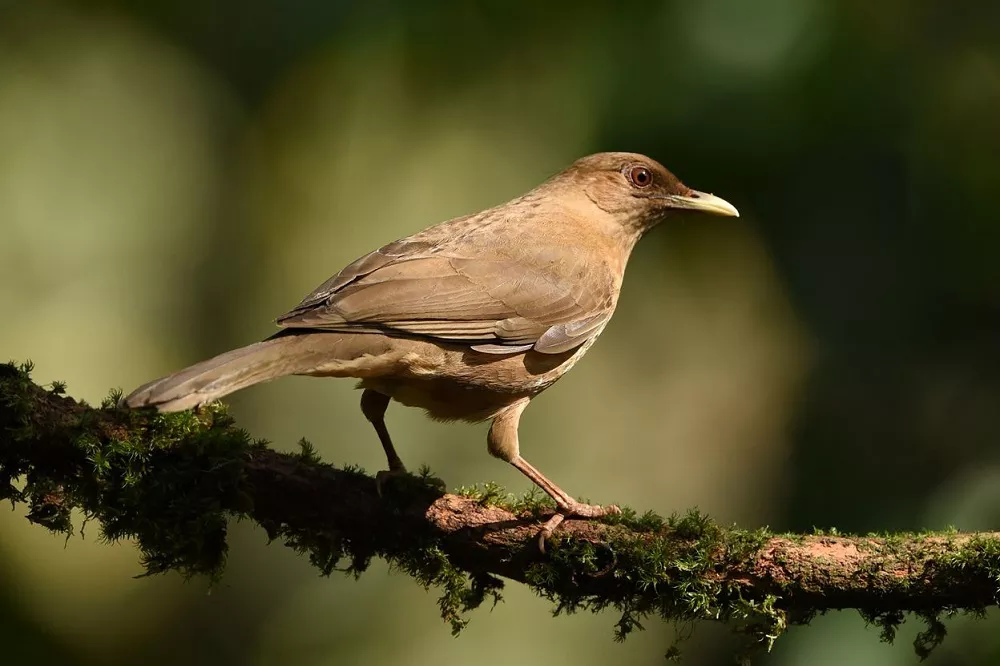Costa Rica is home to a rich and diverse range of flora and fauna, including over 900 species of birds. Among these many feathered inhabitants is the Yigüirro, or Clay-colored Thrush, which has been designated as the national bird of Costa Rica.
Appearance and Characteristics
The Yigüirro is a medium-sized bird with a distinctive brownish-gray plumage and a bright orange-yellow beak. It measures around 25 cm in length and weighs between 55 and 90 grams. The male and female share similar physical characteristics, although the male is often slightly larger than the female.
The Yigüirro is known for its melodic song, which is a much-loved sound throughout Costa Rica. Its song is most commonly heard during the rainy season, when the bird is most active. The Yigüirro can be found throughout the country, from sea level to high elevations in the mountains, and is especially common in gardens and parks.
Habitat and Distribution:
The clay-colored thrush is a native bird of Costa Rica and can be found throughout the country. It is also present in other countries of Central America, including Nicaragua, Honduras, and Panama. The Yigüirro thrives in a variety of habitats, including forests, gardens, and agricultural areas. It is adaptable and often seen perched on trees or foraging on the ground.
Cultural Significance
The Yigüirro has played an important role in Costa Rican culture for centuries. In pre-Columbian times, the bird was revered by indigenous people who saw it as a messenger of the gods. Today, the Yigüirro is celebrated as a symbol of unity and national pride. Its song is often used in music and poetry to evoke a sense of nostalgia for the natural beauty of Costa Rica.
In 1977, the Yigüirro was officially declared the national bird of Costa Rica by the country’s National Assembly. Since then, it has been featured on countless postage stamps, coins, and banknotes. In addition, the Yigüirro has become an important emblem for conservation efforts in Costa Rica, which is known for its commitment to preserving its rich biodiversity.
Conservation Status
Despite being a common sight in Costa Rica, the Yigüirro faces several threats to its survival. Habitat loss due to deforestation, urbanization, and agriculture is a major concern, as is the use of pesticides that can harm the bird’s food sources. Climate change may also have negative impacts on the Yigüirro’s habitat and breeding patterns.
Efforts are underway to protect the Yigüirro and its habitat, including the establishment of protected areas and educational programs to raise awareness about conservation issues. By working to safeguard the Yigüirro and other endangered species, Costa Rica is demonstrating its commitment to protecting its natural heritage for generations to come.
In conclusion, the Yigüirro, or Clay-colored Thrush, is an important and well-loved symbol of Costa Rican culture and identity. Its melodic song and distinctive appearance make it a sight and sound that is instantly recognizable throughout the country. As Costa Rica continues to prioritize conservation efforts, the Yigüirro and other native species will hopefully continue to thrive for many years to come.
Related topics:
- What is the national bird of Norway?
- Canada’s National Bird: The Common Loon
- What is Australia’s National Bird?
- Guatemala’s National Bird: Resplendent Quetzal
- Cuba’s National Bird: The Cuban Trogon
- Mexico’s National Bird: The Golden Eagle


 Facebook
Facebook  Instagram
Instagram  Youtube
Youtube 